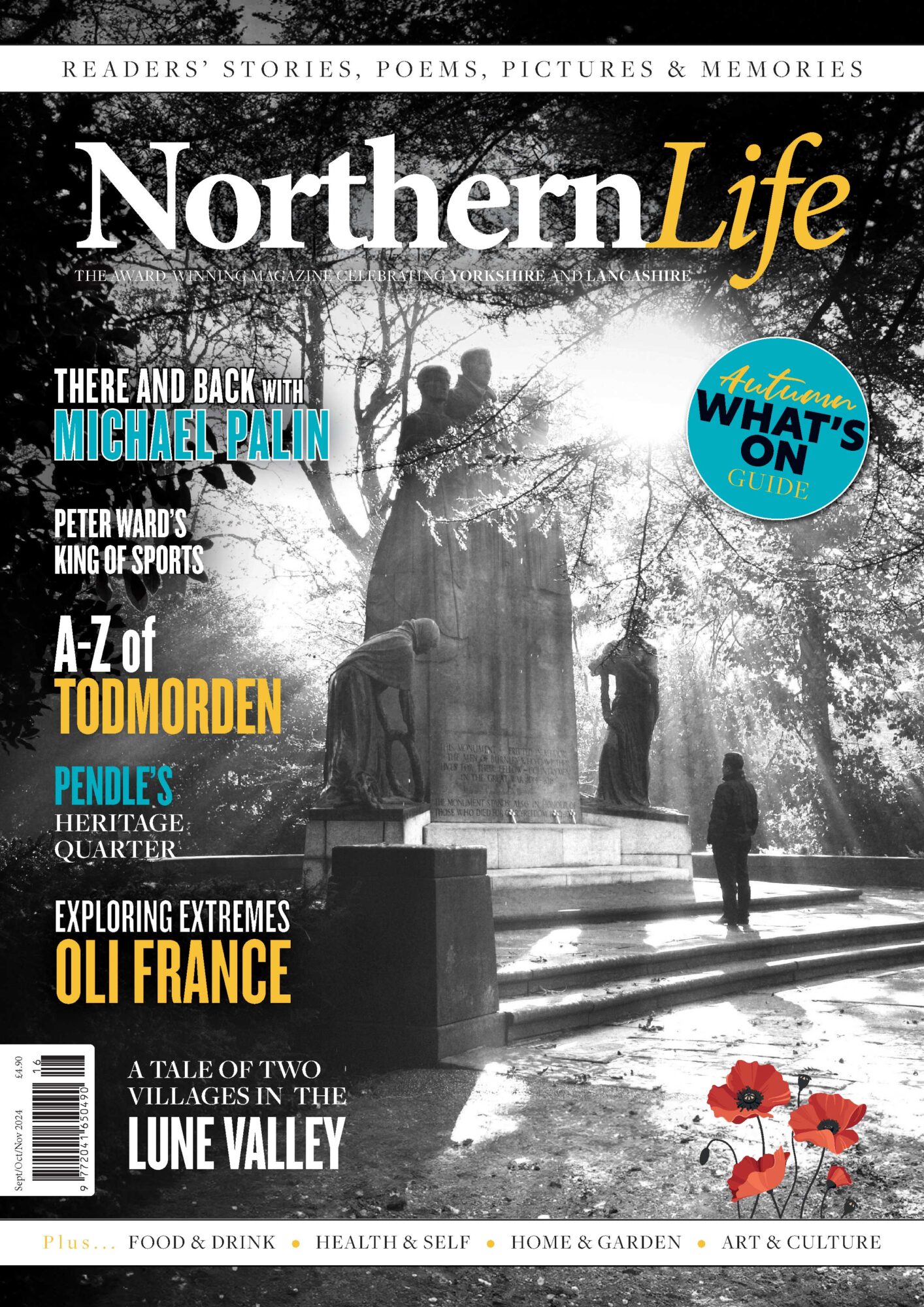Wilfred Pickles and the White Hare
by Northern Life
Nearly twenty years ago I took part in a programme called Ramblings for Radio 4, recorded while walking across Ilkley Moor from White Wells at Ilkley to Dick Hudson’s above Bingley, with Jeremy Jessel from the BBC, a countryside warden and a lady novelist from Manchester.
We chatted all the way, the microphone picking up a natural background of breezes, birds and occasional aircraft in and out of Yeadon. I was reminded of a Northern Children’s Hour in 1949, when Wilfred Pickles followed virtually the same route in reverse. But things were rather different then.
Of course, Halifax-born Wilfred Pickles was no stranger to the area. In 1949 he was at the height of his popularity, due largely to his longrunning radio series Have a Go. Familiarly ‘Our Wilfred,’ he needed two secretaries to deal with his fan mail. It is not easy nowadays to grasp the immense post-war success, first regionally then nationally, of the peripatetic Have a Go, with its homely interviewing of ordinary people (“Ow do … ‘ow are yer?”) and modest prizes for a lighthearted quiz (“Give ‘im the money, Barney”).
When Have a Go was broadcast from Haworth in March of 1949, a hundred locals applied to take part. The audience was admitted only by tickets which were printed just beforehand so as to minimise the risk of forgeries, and an estimated 8,000 wanted one!
In the event, 800 were crammed into a Sunday school meant for 400. Three women without tickets tried to bluff their way in by each pretending to be producer Barney Colehan’s wife. Haworth, it was said, “had never seen so many policemen,” brought in to combat gatecrashers.
In 1948 when the Crown Film Unit, on behalf of the Ministry of Labour, made Golden Fleece to encourage recruitment for the textile industry, its highlight was a simulated Have a Go in the canteen at Grove Mills, Keighley. This proved an ideal vehicle for its contestants – four spinners and weavers, a chief clerk and an overlooker – to assure Wilfred that their firm “made the finest cloth in Yorkshire.”
Naturally, then, the local press prepared listeners for Wilfred’s Children’s Hour broadcast on Sunday, February 13th, 1949: “He will describe his way over the fine stretch of moorland between Airedale and Wharfedale. Starting from Dick Hudson’s he will walk over to the Cow and Calf rocks and down into llkley…”
Granted, the Yorkshire Observer revealed that “he won’t actually be on the moors,” but since this admission accompanied photographs of Wilfred on llkley Moor – or at least on the edge of it, at Dick Hudson’s – careless readers missed the point.
At Dick Hudson’s incidentally, a couple of days before his programme, Wilfred played appropriately to the media when he “flung off his overcoat, filled his lungs” and sang!
The broadcast itself was well received: “Our Wilfred missed none of the high spots of a perfect day between winter and spring on the moors,” and the farmers, gamekeeper and amateur archaeologist he spoke to en route had “charmingly natural voices”.
Unsophisticated listeners of 1949 seem to have accepted at face value such less likely episodes as Wilfred being persuaded to ride a frisky colt and getting a busload of strangers to chorus On Ilkla Moor baht ‘at.
Some pricked up their ears at a detail, however. Waxing eloquent while describing his walk, Wilfred said he saw “a white hare dash across my path.”
Were there, in fact, white hares on llkley Moor? This question was much discussed over the next few days. The landlord at Dick Hudson’s had never seen one but had spoken to people who said they had.
A poultry farmer at High Eldwick had never seen one either, but had heard there might be some ‘higher up.’
Mr J R Teasdale, huntsman with the Airedale Beagles for 25 years, thought “it might have been a very light coloured one – they look white sometimes against the heather.” He had only ever heard of one white hare on Ilkley Moor, and that had been found dead back in 1927.
Bradford naturalist Sidney Jackson thought Wilfred’s hare-spotting ‘a bit of fiction.’
Wilfred himself seemed quite unabashed. “I’m not an authority on that sort of thing,” he told a reporter. “I suggest you ring Nan Macdonald, the producer, who is at Newcastle today. The line introduced a song, and it may just have been poetic licence.”
Miss Macdonald was in rehearsal and couldn’t come to the phone. Scriptwriter Joan Littlewood was unavailable too.
Still, it was admitted that Wilfred hadn’t walked over Ilkley Moor at all. He had worked from an ‘atmospheric script’ and broadcast from the studio in Leeds. The farmers, the gamekeeper and the amateur archaeologist were genuine enough but they too had been assembled in the studio!
All in all, Our Wilfred’s white hare was good for a laugh. His gaffe – or rather his producer’s and scriptwriter’s gaffe – wasn’t a storm in a teacup; it wasn’t even a storm in a thimble.
Life could be bleak in 1949. War memories were still recent, we were still rationed, and winters tended to be much harsher than they are now. The wireless offered both escape and interest, and the innocence of the listening public was still tangible. Wilfred Pickles and Children’s Hour were to retain their popularity for a long time yet.
